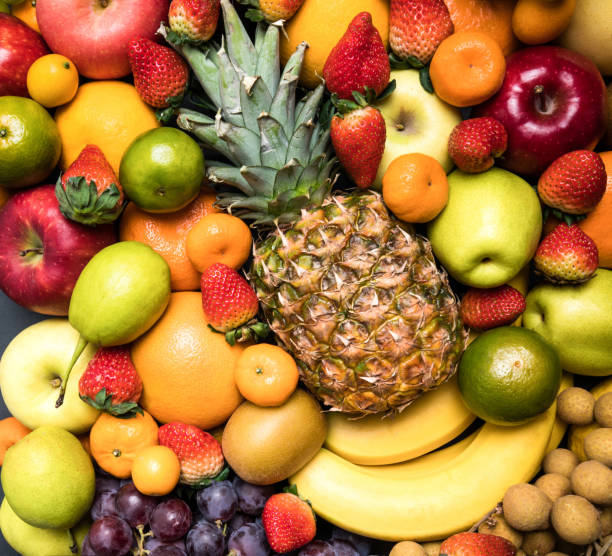Introduction – Current State of Play: The Fruit Sector in Sri Lanka
Sri Lanka’s fruit market is undergoing a whirlwind of changes in 2025, and it’s no longer business as usual. From bold policy reforms to erratic weather and shifting consumer trends, the dynamics are complex, and companies need to stay sharp if they want to thrive.
In April 2025, Sri Lanka took a major step by committing to reduce tariff and non-tariff barriers with the United States. Why? Because the U.S. slapped a hefty 44% tariff on roughly $3 billion worth of Sri Lankan exports. That move rattled the export community and threatened the island nation’s economic rebound. For fruit exporters, this meant rethinking their U.S. market strategies.
Meanwhile, the local supply chain is facing its own demons. A predicted 5.77% drop in paddy production for the 2024/25 Maha season has sparked concerns about broader agricultural volatility. Combine that with post-harvest losses of 270,000 metric tons of fruits and vegetables every year—costing Rs. 20 billion—and you’ve got a fragile system stretched to its limits.
Add in unpredictable weather, particularly affecting fruit harvests like mangoes, and it’s clear that suppliers and buyers alike must stay agile. Just this week, Colombo and much of the island are seeing persistent rain and cloudy skies, potentially delaying harvests and disrupting logistics.
Amid rising inflation, health-conscious locals are demanding more organic, fresh, and sustainably sourced fruits. There’s also a growing taste for fruit-based snacks and smoothies, especially among younger consumers. The market is evolving fast—and if you’re in the fruit business in Sri Lanka, you need to evolve with it.
Deep Dive – What’s Making Headlines? Key Recent News & Impacts
Let’s take a closer look at what’s shaping the fruit industry today—and what it means for tomorrow.
Sri Lanka’s Fruit Deficit – A Gap to Fill
In 2023, Sri Lanka consumed 12.8 million metric tons of fruit. However, the national requirement was 19.6 million metric tons. That’s a huge shortfall. The Department of Agriculture has set its sights on boosting yields by 2027 using high-tech methods like high-density planting, variety breeding, and smarter pest control.
Planned yield goals include:
- Bananas: 19.5 metric tons/hectare
- Mangoes: 9.5 metric tons/hectare
- Papayas: 45 metric tons/hectare
- Pineapples: 14 metric tons/hectare
- Passion Fruits: 30 metric tons/hectare
FAO & China Step In
To help bridge this gap, the FAO and China launched a $1.5 million project to enhance fruit value chains. This initiative is rolling out across key districts like Kalutara, Gampaha, and Monaragala. It’s all about practical training, model farms, and better post-harvest handling—crucial for reducing losses and improving quality.
A Push Toward Exports
Sri Lanka isn’t just thinking locally. In December 2024, discussions between Sri Lankan officials and Marks & Spencer aimed to slot Sri Lankan fruits—think mangoes, pineapples, avocados—into the British retailer’s supply chain. This could mean big things for premium exporters targeting European markets.
Mango Market Woes
Let’s talk mangoes. The Karthakolomban variety sees price crashes of up to 70% during peak seasons. That’s unsustainable for farmers. Solutions on the table include promoting value-added mango products, forming farmer clusters, improving cold storage, and tapping into new export markets to smooth out seasonal spikes.
Top 10 Verified Fruit Suppliers in Sri Lanka – Navigating Current Market Realities
If you’re sourcing fruits from Sri Lanka right now, it’s crucial to deal with suppliers who can handle today’s volatility. These suppliers have been vetted through Freshdi for their export capabilities, certifications, and resilience.
-
TRANSFOOD Lanka Pvt Ltd
Specializes in processed fruit juices. Known for reliability and international certifications. -
Waguruwela Oil Mills (Pvt) Ltd
Offers high-quality fruit cocktails. Strong presence in both local and export markets. -
Ceylon taste mart
Unique player offering fruit-based tea assortments. A hit among specialty buyers. -
Hjs Condiments Limited
Trusted exporter of organic fruit cocktails. Focused on health-conscious markets. -
CEYLON GREEN PRODUCE (PRIVATE) LIMITED
Offers sparkling mango juice. Their natural beverages are gaining traction in Asia and Europe. -
GREENFIELD BIO PLANTATIONS (PRIVATE) LIMITED
Known for nutrient-rich banana fruit bars. Ideal for health food distributors. -
Country Style Foods (Pvt) Ltd.
Offers a range of mixed fruit nectars. Strong distribution networks across South Asia.
Dynamic Ranking Note: Rankings on platforms like Freshdi can shift based on real-time performance, with features like “Suppliers of the Month” and “Top Exporter of the Quarter” reflecting recent deals, RFQs, and buyer feedback.
Market Navigation – Strategic Responses to Today’s Fruit Landscape in Sri Lanka
Given the current market turbulence, what should businesses be doing?
Opportunities to Seize
- Export Expansion: With new trade negotiations in the works, especially with the UK and U.S., now is the time to position for global reach.
- Organic Boom: Consumers are leaning into organic and sustainable produce. If you’re sourcing, prioritize certified organic suppliers.
- Value-Added Demand: Products like fruit bars, juices, and gift boxes are in demand. This is your chance to diversify.
Risks to Watch
- Weather Volatility: Rainy days ahead mean potential harvest delays and transit issues—plan for flexible delivery schedules.
- Price Fluctuations: Especially in mangoes. Secure contracts in advance or explore off-season varieties to stabilize procurement.
- Supply Chain Gaps: Post-harvest losses are high. Partner with suppliers investing in cold storage and efficient logistics.
Regional Insights
- Kalutara, Monaragala, and Gampaha are seeing investments in model farms and improved training—ideal sourcing zones.
- Anuradhapura and Kilinochchi are benefiting from value chain projects—great for long-term supplier partnerships.
Conclusion – Key Takeaways for Businesses in a Dynamic Market
Let’s recap:
- Sri Lanka’s fruit sector is in flux, driven by trade tensions, weather disruptions, and shifting consumer preferences.
- Investments in yield improvement, supply chain efficiency, and export expansion are creating new opportunities.
- Verified suppliers who can adapt quickly to these changes are your best bet for stable sourcing.
Navigating this market requires up-to-the-minute intelligence and trusted networks. That’s where platforms like Freshdi come in. From monitoring RFQ trends to supplier verification and seasonal alerts, Freshdi empowers buyers to make informed, confident sourcing decisions—even in turbulent times.
Key Takeaways
- Stay Alert: Monitor trade and policy shifts closely—tariffs and agreements are evolving rapidly.
- Go Organic: The demand is rising; choose certified suppliers.
- Think Value-Added: Diversify beyond raw fruit; juices and snacks are booming.
- Use Tools Like Freshdi: For real-time supplier rankings, RFQ trends, and verified sourcing options.
Buyer’s Checklist: Are You Fruit-Sourcing Smart in 2025?
✅ Have you verified your supplier’s export readiness on Freshdi?
✅ Are you sourcing from regions with recent investment and training support?
✅ Is your supplier equipped to handle weather-related delays?
✅ Are you considering value-added fruit products to meet global demand?
✅ Have you factored in upcoming tariff and trade shifts in your pricing strategy?
Future Outlook: What’s Next for Sri Lanka’s Fruit Market?
Looking ahead to the second half of 2025 and beyond, expect more innovation across farming practices, increasing digitization of supply chains, and stronger emphasis on sustainability. Sri Lanka is positioning itself as a premium, export-ready fruit market—and the smart players will be those who act now.
With platforms like Freshdi offering deep market insights and verified supplier access, the future of fruit sourcing in Sri Lanka looks promising—even amid the chaos.
FAQs
1. What fruits are most in demand from Sri Lanka in 2025?
Mangoes, bananas, pineapples, papayas, and avocados are topping the charts, especially in export markets like the UK and Asia.
2. How is weather impacting Sri Lanka’s fruit supply right now?
Heavy rains and overcast conditions are delaying harvesting and affecting transportation, especially for sensitive fruits like mangoes.
3. Are there reliable suppliers who can handle export orders under current conditions?
Yes. Verified suppliers like TRANSFOOD Lanka Pvt Ltd and Hjs Condiments Limited are equipped for international shipments despite weather and supply chain hiccups.
4. How can Freshdi help me as a buyer?
Freshdi gives you real-time market updates, lets you track top-performing suppliers, and helps you issue RFQs based on the latest trends and logistics realities.
5. Is Sri Lanka a good long-term source for fruits?
Absolutely. With ongoing investments in agriculture, supply chain tech, and trade partnerships, Sri Lanka is becoming a key player in the global fruit market.
References
- Reuters – Sri Lanka Tariff Reduction Plan, 2025
- Lanka News Web – Agricultural Setbacks & Production Goals
- Advocata – Post-Harvest Losses
- Lanka Business Online – Mango Market Fluctuations
- Lanka News Web – Fruit Production Expansion
- News First – FAO & China Fruit Chain Project
- Statista – Consumer Trends


